Beneficial Garden Insects
A guide to the many predatory insects, helpful bugs, birds and animals that you can leave be in your garden.
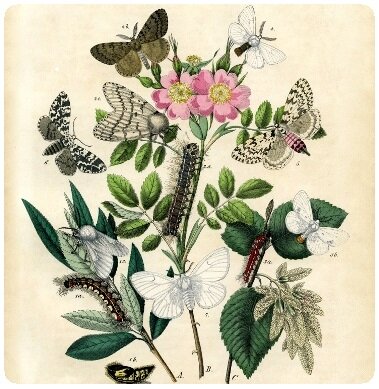 The ecosystem is shared by all species, good and bad. Beneficial garden insects or downright rotten cheeky pests, they all have a right to their place and a role to play in the dynamic relationship to keep nature balanced.
The ecosystem is shared by all species, good and bad. Beneficial garden insects or downright rotten cheeky pests, they all have a right to their place and a role to play in the dynamic relationship to keep nature balanced.
Sometimes it's just being in the wrong place at the wrong time. Good garden bugs in your garden can overwhelm a different area if they are taken out of their natural environment. Loveable rabbits in the wild or zoo are naughty bunnies on your land and butterflies are beautiful but not their killer caterpillar kids!
What are these beneficial garden insects, birds and animals?
Who are we to say... as a writer once said: "It may be that frogs, ducks, hedgehogs and moles are good because they EAT slugs. Or it may be that slugs are good because they FEED frogs, ducks, hedgehogs and moles. More likely, there's no morality in nature at all."
So in praise of good garden bugs and creatures here we go:
To read about helpful garden birds, go to: Backyard Birds
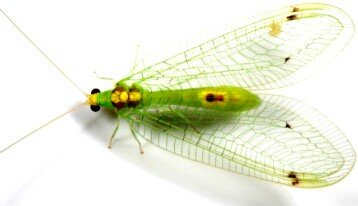
Green lacewing
Lacewings should be called race wings — they work fast, going flat-out eating (or rather sucking dry) hundreds of bugs and their eggs. It is the lacewing larvae which are most predatory, and their favourite targets are aphids, whitefly, leafhoppers, mites, mealybugs, scale insects and some moths and caterpillars.
Native to Australia, and now found worldwide, lacewings can be bought from bug suppliers in quantity. It helps to encourage them to stay around by providing a varied diet. For a start, they also like nectar, so grow flowering plants nearby. Have a variety of plants so they get a variety of bugs.
They're more faithful than ladybugs, but the adult lacewings fly around at night, and are attracted to nearby lights.
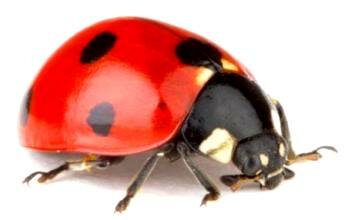
Ladybugs
Often called Ladybeetles or Ladybirds, ladybugs look just the dearest ladies, waddling along in their pretty spots.
But they have a roving eye and will desert you for another!
Even if you buy them, don't always expect to find many around when you need them. Green lacewings are a safer buy.
Any faithful ladybugs you have are true beneficial insects and devour aphids, scale, mealybugs and other small soft-bodied insects. They soon clean up the aphids on a plant... if fact you can carefully move ladybugs around your garden if you wish. As long as they are well fed, they will stay true to you.
If a ladybug sees you coming, it will curl up and fall off the edge of the leaf, so hold your hand to catch it. Soon it will stop hiding under its shell and you can place it where you want it — say on a badly infested plant at the other side of the garden.
Ladybug larvae are about 4mm long with similar markings to adults. They are very hungry and not so likely to leave the scene than their parents.
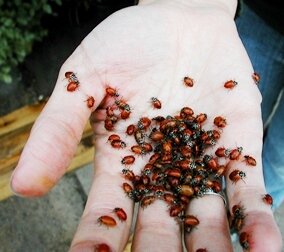
There are many different ladybugs all with their own markings and habits. Not all are red with black spots; they come in yellow with stripes even.
There is one variety which attacks the pupae of native ladybugs. Called the Asiatic harlequin ladybird, it has only recently been accidentally introduced into some countries.
via Wikimedia Commons
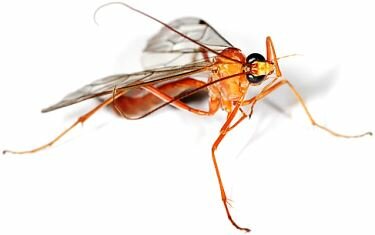
Parasite Wasps
These are tiny wasps quite unlike big yellow-striped bullies that sting. Parasitic wasps are divided into many species and the adults feed on nectar and pollen.
That's why it's a good idea to plant flowers near your vegetables to encourage these little winged creatures.
The family of Chalcid wasps include Trichogramma which kill the eggs of the moth species Lepidoptera, such as codling moth and others which turn into ravenous caterpillar pests.
Trichogramma lay their eggs inside the larger eggs of Lepidoptera, then hatch out into larvae and no guesses what they feed on. Instead of a pesky caterpillar emerging from a lepidoptera moth egg, there is an adult Trichogramma wasp, ready to find a mate and start the good cycle again.
Other Chalcid wasps and wasps from the Ichneumon and Braconid family kill many of the pests that eat or suck plants. The likes of the tomato hornworm, cut worm, cabbage worm and cabbage looper, corn earworm and corn borer, cutworm, armyworm, aphids, leaf roller, codling moth and various other caterpillars and grubs, all fall prey to parasitic wasps.
As well as invading the eggs of their host, parasitic wasps can also inject their eggs into live hosts, usually a caterpillar or pest worm. Still other wasps lay their minute white eggs on the outside of a pest. The eggs turn into larvae and burrow and pupate inside the host or form a cocoon on the outside.
Trichogramma and a few of the other wasps can be usually be bought and posted to you from suppliers.
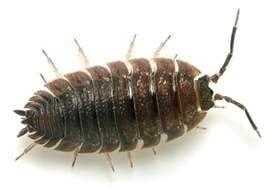
Slaters
Talk about community living, their abundance knows no bounds. Slaters, also known as woodlice, sowbugs or pill bugs, generally ignore green plants, preferring decayed damp material. They are sensitive to hot, dry conditions and will die of dehydration if exposed too long, especially in their young moulting stages.
Slaters are beneficial insects in that they help breakdown organic matter, but if there is a population explosion, they have been known to dine on ripe, soft fruits touching the soil, such as strawberries, and very occasionally plant roots, and even young growth shoots.
Control slaters by keeping areas where you don't want them well swept, dry and free of any organic material. If they love your watered, mulched and composted garden and become overcrowded, follow the ideas here: Organic Garden Pest Control.
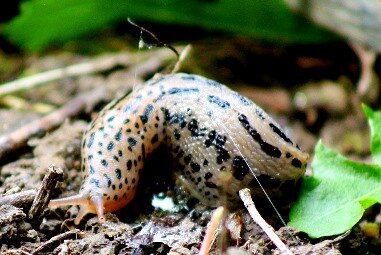
Slugs
Slimy, slippery slugs (... like politicians), seem to create havoc where ever they go, but some praise must go to them (like some politicians).
They are stars in your compost; in fact they help with any rotting vegetation anywhere. Interestingly, they will also break down animal fat — if you put that in your compost. The smallest slugs are the worst for fresh green leaves, but the adults prefer rotten old stuff which they nicely turn in compost.
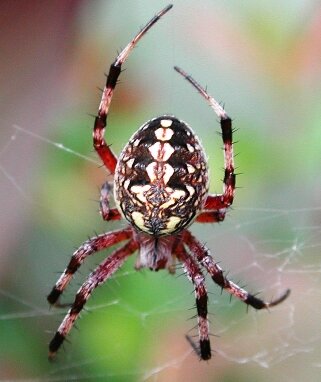
Spiders
It would be rare to find anyone that holds spiders in deep affection... more like fear and loathing. Respect would be the best way to look at spiders and avoid them if you can but benefit from their predatory insect feasting in your garden and house.
Their value as natural pest control providers is mammoth and calculations have shown unbelievable amounts of insects are trapped and killed by spiders. Along with birds, spiders are the main controllers of cicadas which damage plants where they lay eggs and suck tree roots when in their nymph stage underground.
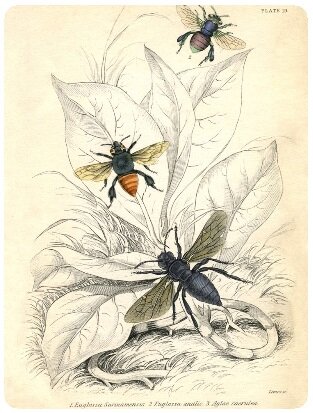
By attracting beneficial garden insects and encouraging wildlife, it means these helpful bugs and creatures multiply and invite a few more of their mates into your garden.
Handy birds in your garden: Attracting backyard birds





